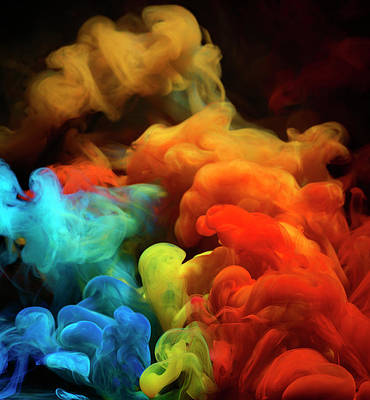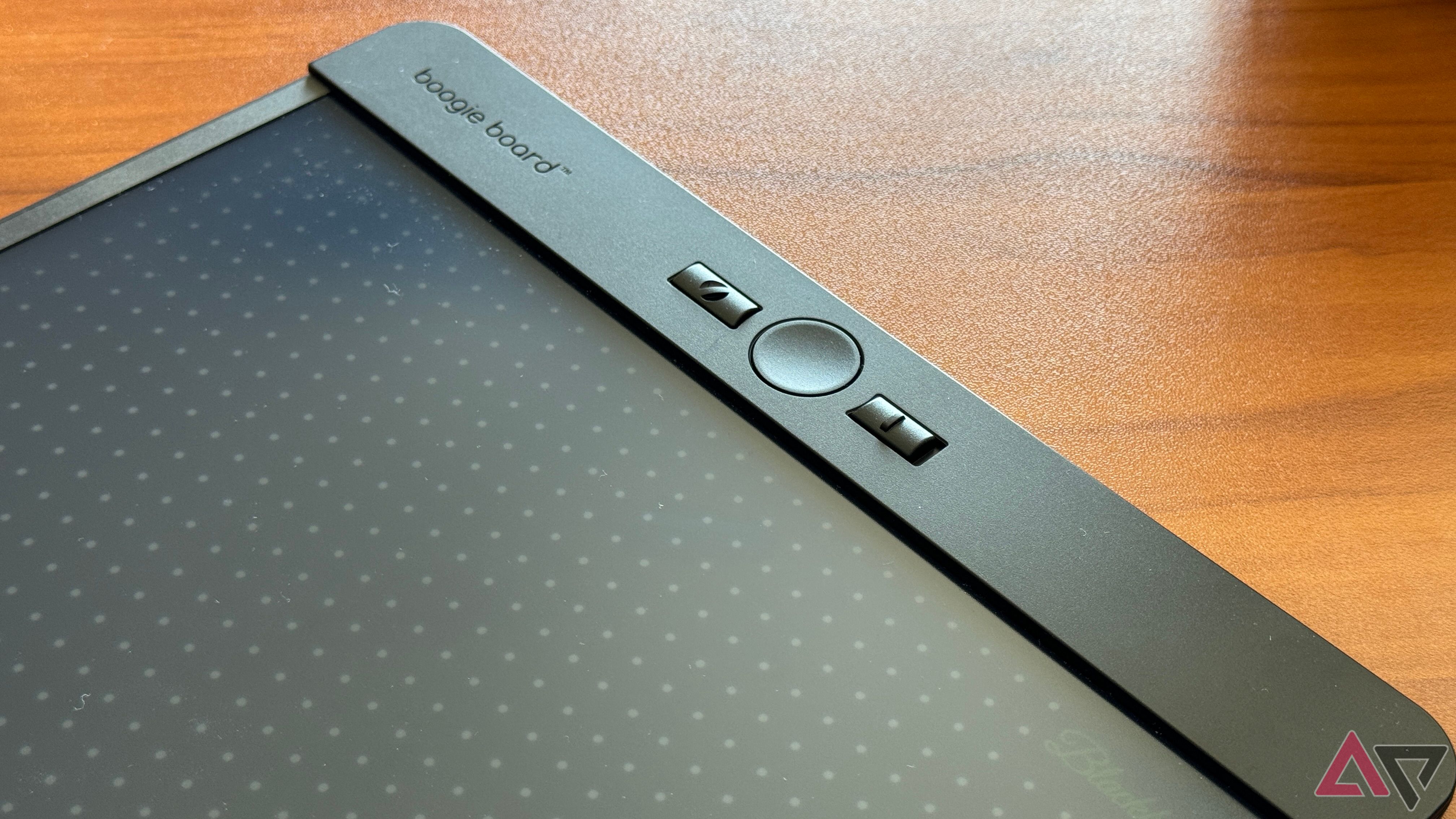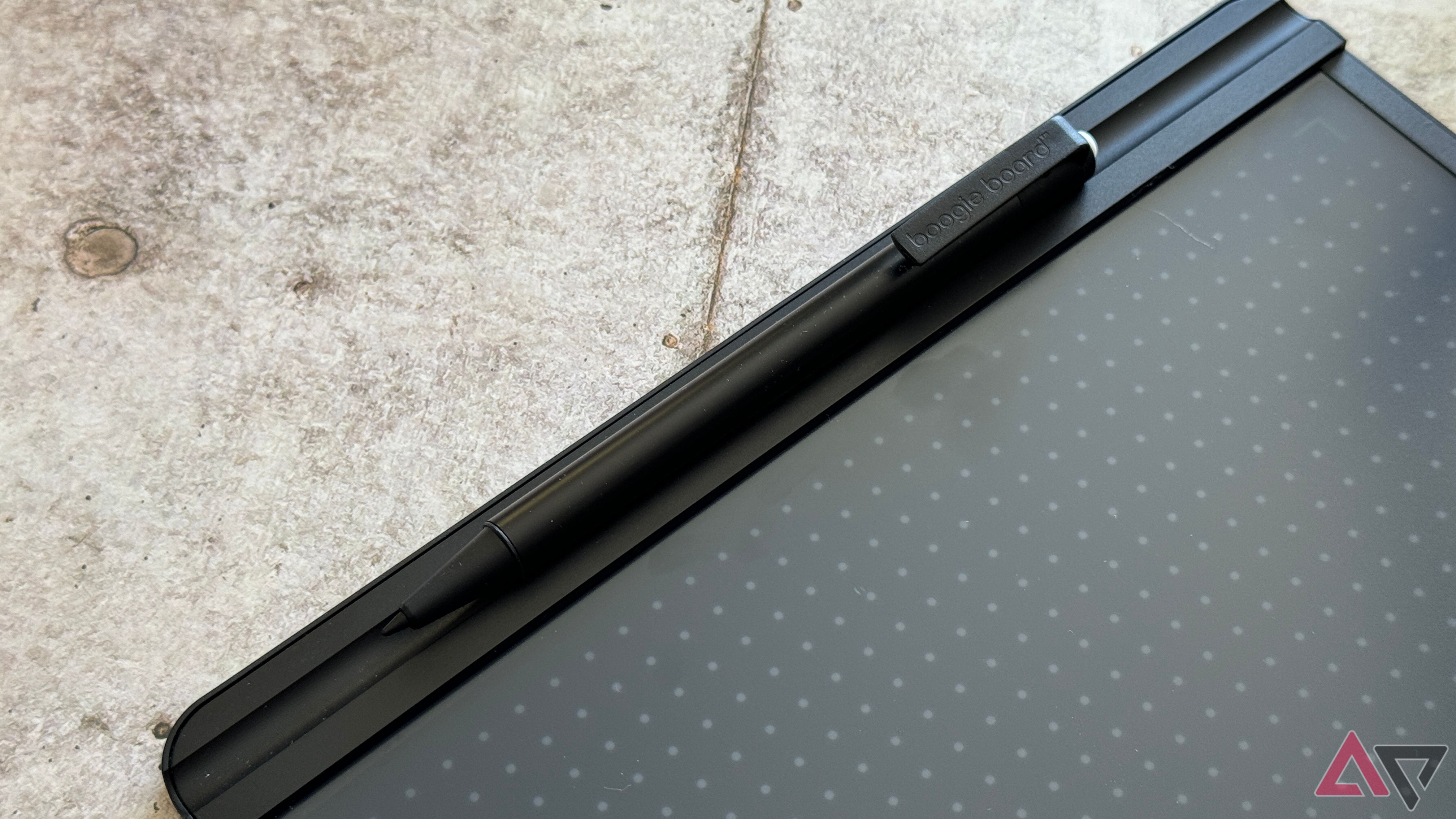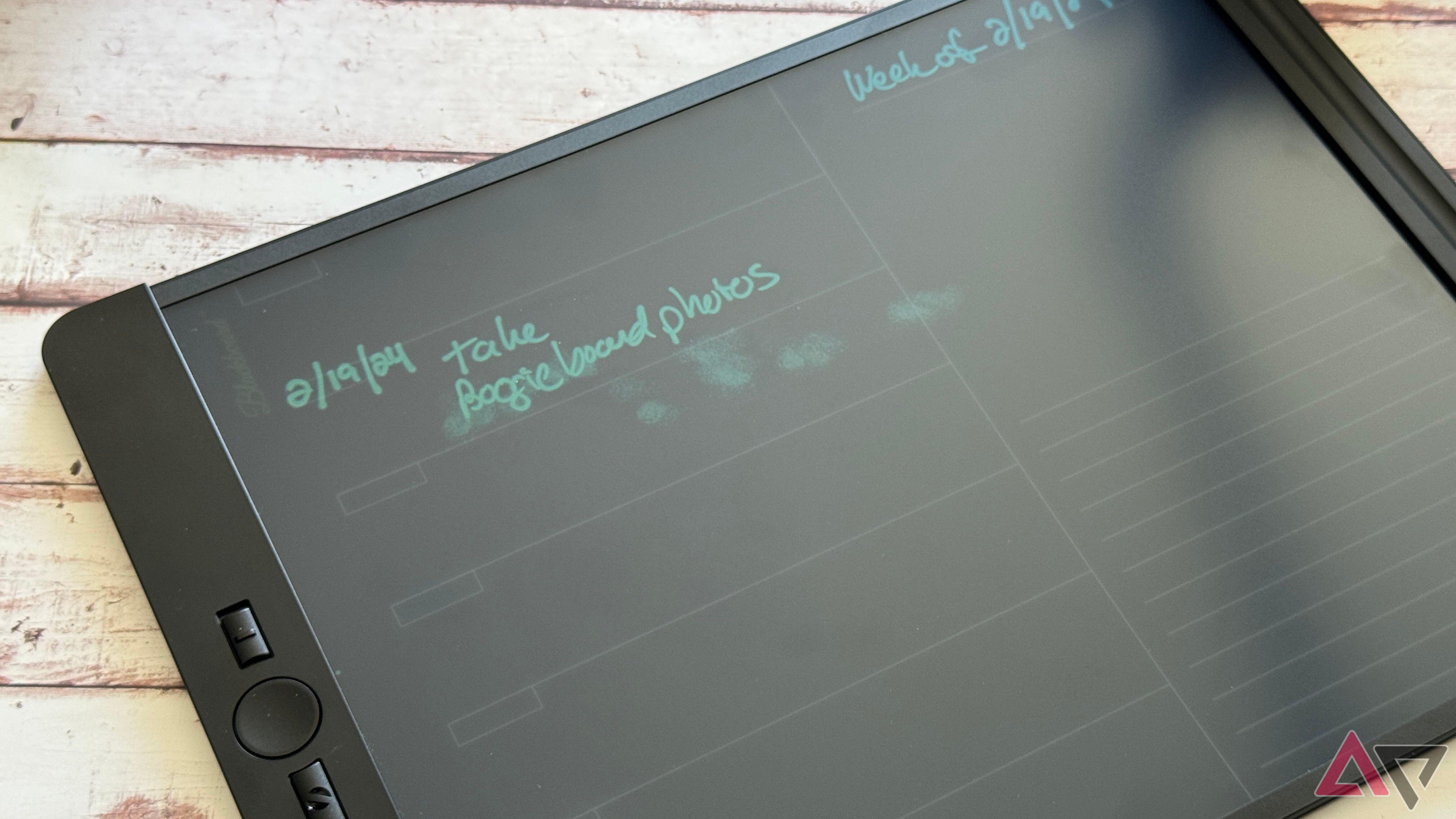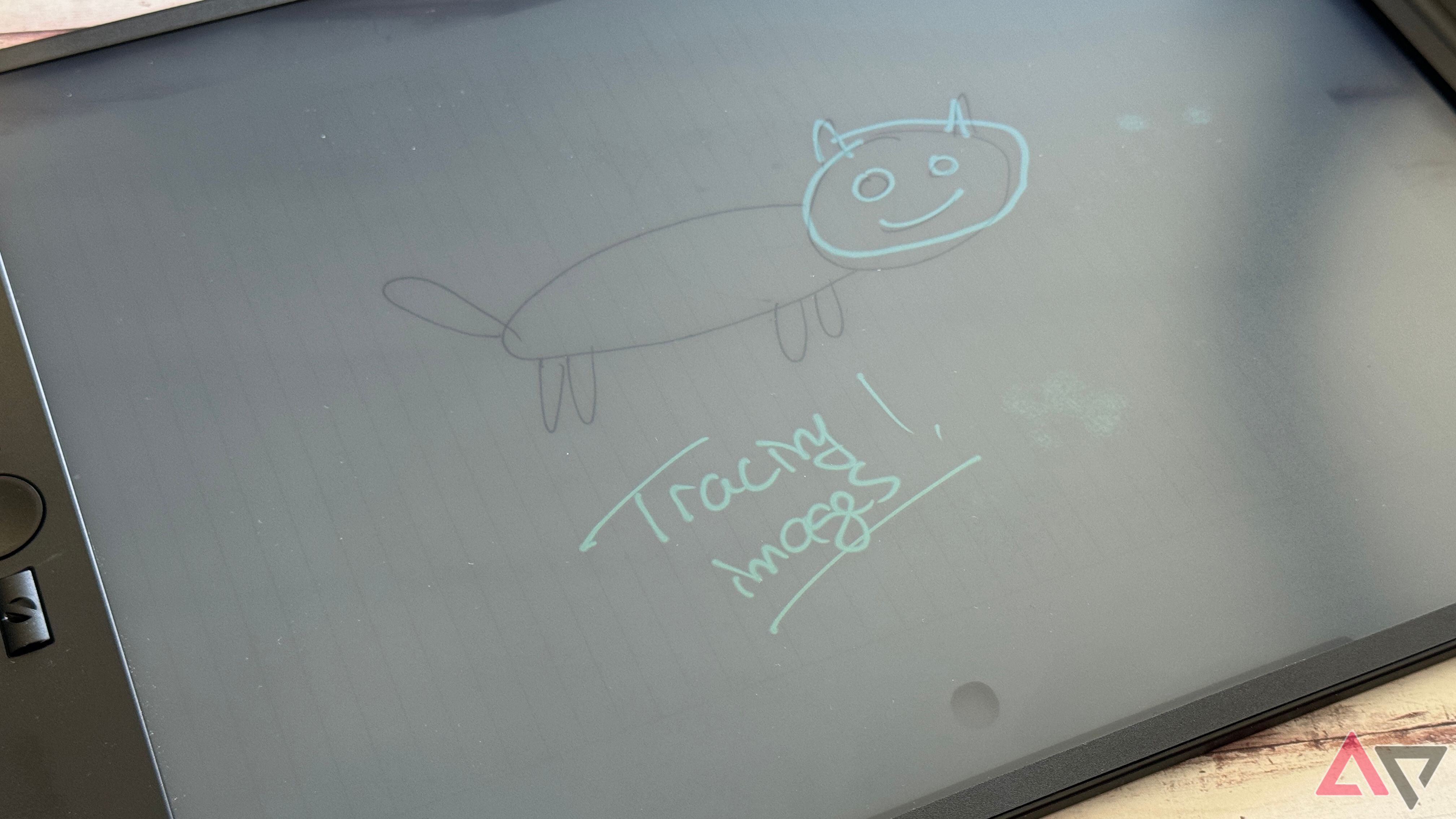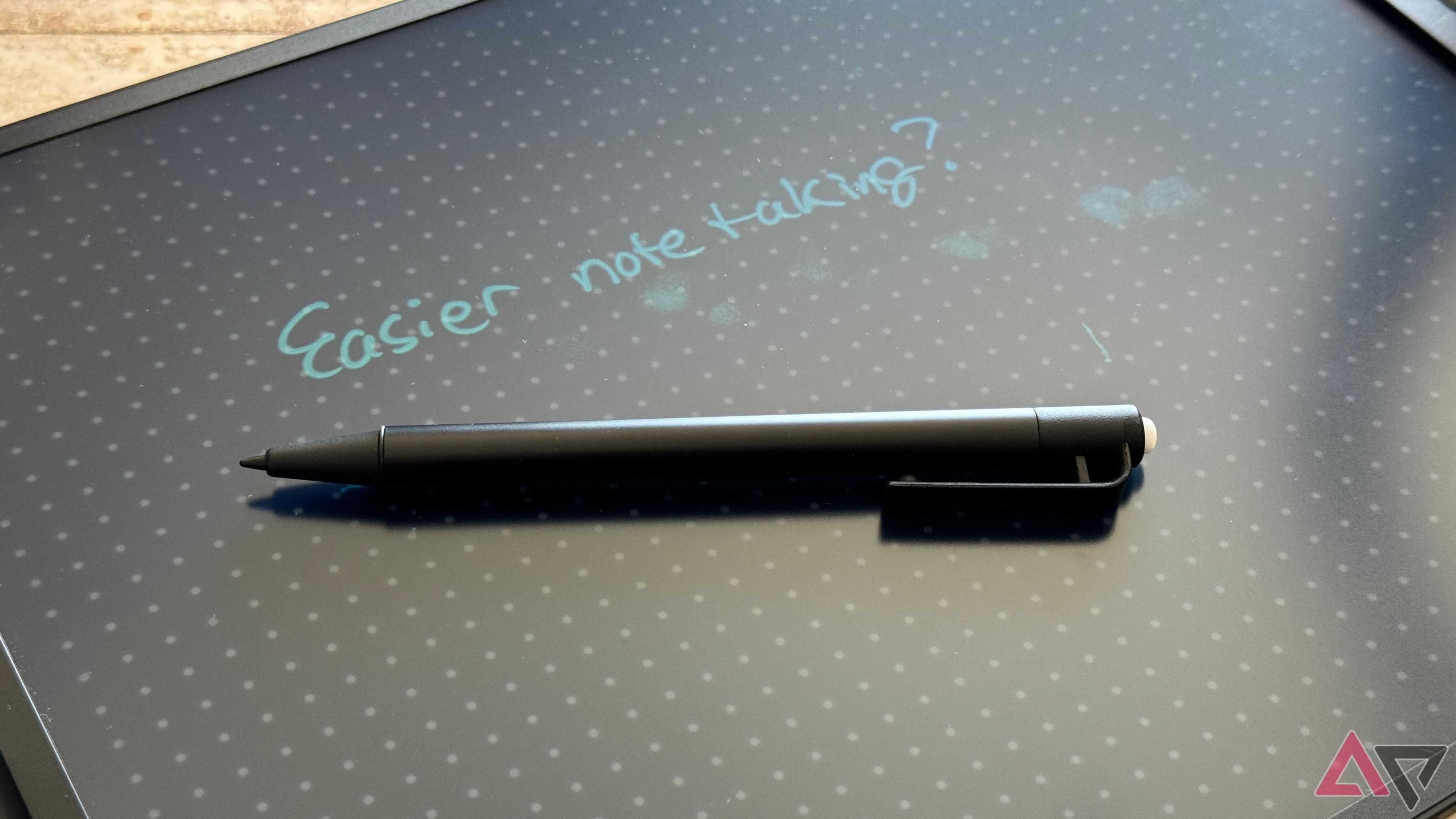I love how convenient laptops and Chromebooks are for notetaking, but sometimes I still want to write things down with a pen. Whether drawing out a graph or marking up a document, a pen can be much easier. Writing might also be significantly better than typing into a document, depending on how you process information.
Unfortunately, a tablet with a stylus can get expensive, and depending on how much you spend, the writing experience can still be sub-standard. Boogie Board attempts to provide an affordable alternative with its Blackboard, giving users the benefits of a pen with the ease of tablet use. The results are mixed, but it might be worth checking out if you love writing notes.
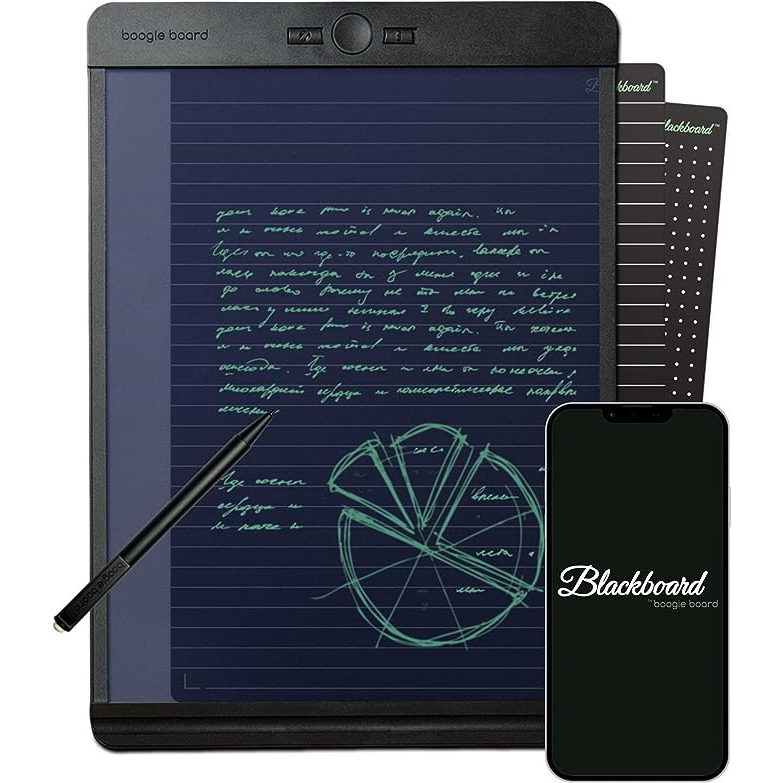
Boogie Board Blackboard
The Boogie Board Blackboard is useful when you want to take lots of notes but want to digitize your writings on the go. It features multiple templates, from grid lines to weekly planners, with a semi-transparent LCD that allows users to add their templates. It comes with a stylus but accepts any inputs, even your finger.
- Smooth writing experience
- Semi-transparent LCD to add own templates
- Long battery life
- No palm rejection software
- Erase feature doesn’t work well
Price and availability
Amazon works best
The Blackboard is available through Boogie Board and Amazon for $45, but frequent sales see the Blackboard sold for around $30. Boogie Board also offers different sizes and accessories, including folios and protective cases for taking your Blackboard on the road.
Design
All plastic, all the time
Boogie Board kept it simple with the design of the Blackboard. A thin plastic frame houses a semi-transparent 8.5-inch by 11-inch LCD. The LCD is plastic and flimsy; I wouldn’t abuse the Blackboard too much. Boogie Board also includes several templates to insert behind the Blackboard, ranging from a weekly planner to gridlines.
If none of those meet your needs, you can create your own, as the semi-transparent LCD has the right opacity for images to pass through. I’ve found it works best for tracing, allowing you to copy an image onto the Blackboard. A single coin cell battery powers the Blackboard for several years.
The Blackboard has the analog feel of an Etch-a-Sketch, with three buttons along the top bezel controlling all of its functions. A magnetic lip at the bottom mates well with the included pen, providing a natural storage point when not in use.
The stylus has a good size and weight, making writing comfortable and natural. I can’t stand a flimsy or poorly balanced stylus, so I’m glad Boogie Board took the time to get it right. The pen has a built-in eraser at the top, but it only works if you’re desperate enough to be in erase mode (more on that later).
Notetaking
It’s decent but not without drawbacks
Writing feels good on the Blackboard, with the plastic LCD providing enough resistance against the pen for a natural experience. I hate when a stylus slides along a glass surface, and while the Blackboard isn’t textured, it’s good enough. Even though the writing is good, readability is a different story. The Blackboard’s LCD is a dark green, with notes displayed in a lighter shade. If you grew up staring at an Apple II, you’ll feel right at home, but without a backlight, it’s difficult to see.
If the lighting is dim, it’s nearly impossible to decipher your notes and the background template, and if it’s too bright, glare creates a viewing nightmare. When you want to start over, the main button at the top wipes the slate completely clean instantly, giving you a fresh canvas.
Readability is further hindered by the Blackboard’s design. Even though the pen works best for input, nearly any pressure will mark the screen, allowing you to write with your fingernail or other stylus if needed. Unfortunately, this added versatility leads to problems, as the Blackboard has no palm rejection capabilities. Without software on the device, it’s impossible to avoid, and with the sensitivity tuned to accept almost anything as a writing implement, it leads to a messy experience. In addition to palm marks, anything from a fingertip to a knuckle grazing the display will result in a smudge or worse.
Palm marks might be acceptable if there were an easy way to remove them. However, the Blackboard’s erase feature only muddies the waters further. Boogie Board links to several videos on its website teaching users how to calibrate the eraser. After several attempts, I gave up, as the different settings only seemed to make things worse. Instead of erasing errors, I was only smudging and covering up the text, leading to a huge eye sore on the display.
Thankfully, the Blackboard includes a physical lock on the top bezel to prevent losing notes or adding marks to existing documents, but it doesn’t help what is already on the page. It wouldn’t be so bad if the capture software on my smartphone had a way to weed out stray inputs, but that leads to the next problem.
Software
At least there is an app
Boogie Board’s Blackboard app is available for Android and iOS. It’s designed to handle several categories of Boogie Board devices, so options like Bluetooth will appear but are not available for the Blackboard. When you want to add a page to the app, it will prompt you to take a photo of the Blackboard. It will then translate the photo into a black-and-white image of your notes, smudges and all.
The app doesn’t eliminate erroneous inputs, and the pages look like something I would’ve received over fax in the early ‘90s. While it works in a pinch, and you can still make out most of what you wrote, it’s not an enjoyable experience. On the bright side, the app does link to OneNote, Evernote, Google Drive, and Dropbox for easily moving notes around, but it doesn’t make up for the other frustrations.
Competition
What else is out there?
Rocketbook dominates the smart notebook space with a wide range of diverse products. The Rocketbook Core reusable notebook costs $37 and provides many of the Blackboard’s benefits. You won’t get the pass-through LCD, but the Rocketbook features 36-lined pages and the flexibility to use any FriXion pen. When you finish a page, you simply wipe it clean with the microfiber cloth and start over again. Unless you’re married to the idea of a semi-transparent LCD, the Rocketbook is worth a look.
Boogie Board also makes the VersaTiles, a small whiteboard replacement product. It uses the same LCD technology as the Blackboard but is wall-mounted, eliminating many of the Blackboard’s issues. It doesn’t feature an opaque display, making readability easier. Since it’s wall-mounted, the VersaTile is less vulnerable to palm prints and other undesirable inputs. Even though the Blackboard isn’t ideal for long-form notetaking, it’s fantastic for short reminders. At only $30, it might be a good idea for your fridge.
Should you buy it?
It’s hard to recommend the Blackboard. I love the concept, and writing feels natural on the display, but there are too many drawbacks. It’s an ideal solution for quick notes, but your page will look like a disaster after an hour-long lecture with your palm resting on the screen. If it were sold at a discount to the competition, I’d be more sympathetic, but more versatile options from Rocketbook can be had for less.
The semi-transparent LCD is the main reason you’d pick up a Blackboard over anything else. It provides versatility the competition can’t match, but I doubt you’ll use it often enough to make the Boogie Board worth buying. If the company found a way to add palm rejection, analog or otherwise, into the Blackboard, I’d be all over it, but for now, I’ll pass.

Boogie Board Blackboard
While the Boogie Board Blackboard offers an alternative to conventional notetaking, its drawbacks prevent it from being a worthy replacement. It provides connections to OneNote, Google Drive, and DropBox for easy transfers, but the software is lackluster overall. The semi-transparent LCD is a neat idea, but without palm rejection, the Blackboard leaves a bit to be desired.

Best smart notebooks in 2024
If you’re looking for an eco-friendly way to take and sort notes, a good smart notebook is for you



